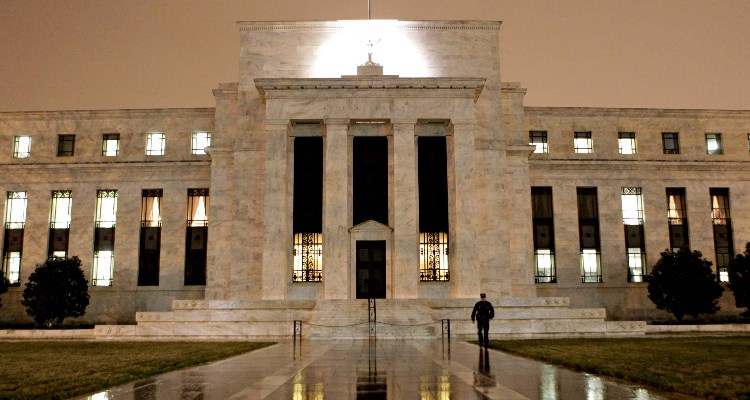
As central banks race to combat soaring prices with interest rate hikes, higher yields are tempting investors back into the fixed income market. U.S. investment grade credit is predicted to generate an annualized return of 5.4%, more than double the returns of the last 10 years, according to Pictet Wealth Management’s return prediction study.
Capital Group told Morningstar that given the uncertainties the prevail in the global fixed income markets, they look to avoid directional interest rate positioning and have greater conviction on the expected change in the shape of the yield curve, where the house expects it to steepen from current levels.
Rate Hikes are the Way to Rein in Inflation
“Policy complexity is everywhere. But the European Central Bank (ECB) and the Bank of England are facing a bigger dilemma than the Fed. In the U.S., we are potentially beginning to see the first tentative signs that inflation has peaked and therefore the Fed may not be compelled to tighten further. Whilst in Europe inflation remains stubbornly high and given the ECB’s sole mandate is to achieve and maintain price stability they will need to retain a tighter monetary policy, therefore we expect the ECB to remain hawkish,” says Flavio Carpenzano, investment director at Capital Group. The mandate is a policy goal to keep inflation low, stable and predictable.
Furthermore, during the gilts crash, Bank of England was unswerving with its rate increase decision.
Carpenzano says: “The Bank of England continued to hike rates despite the gilts situation. This can be seen as a playbook where it used the balance sheet and liquidity for dealing with the financial stability problem and interest rates for the price stability issue.”
Carpenzano thinks the core inflation increase signals some concern for the European central bankers. “Headline inflation is going down because energy prices are going down. Core inflation still remains elevated, and this is mainly driven by the labor market being tight in Europe and wage pressure remains elevated.”
While Carpenzano observes that lending standard also becomes tighter in the region, meaning that demand for liquidity might reduce, this could lead the economy to slow further. “With a still-elevated inflation rate, a dilemma of supporting growth and controlling inflation will weigh on the central bank,” he adds, who thus prefers having an exposure to U.S. duration.
Carpenzano observes that lending standards are continuing to tighten, as well as demand for liquidity reducing, this which will be further headwinds for the economy. “With a still-elevated inflation rate, a dilemma of supporting growth and controlling inflation will weigh on the central bank,” he adds.
What’s Behind the Falling Inflation?
Pierre Chartres, Singapore-based fixed income investment director at M&G, says that from the perspective of a monetarist, there are reasons to be optimistic on inflation. He thinks an important underlying factor at play is a dwindling money supply. He believes the market has overlooked how a contraction in liquidity has been driving inflation down and how this factor will continue play a role.
“We think the reason why inflation spiked the way it did during the reopening of the pandemic is because of a huge amount of liquidity and money supply from both central banks and governments in forms of rescue packages... The amount of goods and services that money can buy hasn’t caught up to the pace of the increase in money supply,” Chartres recalls.
Now, according to him, the money supply is coming down ‘quite dramatically’, measured by the amount households have in bank accounts and some money market funds.
A Recession is Not Necessarily the Most Likely Scenario
“If central banks can remove the excess liquidity, inflation can come down. The economy does not necessarily need to see unemployment rate rising to 10% or a significant economic downturn to see a descending inflation happening,” adds Chartres, who believes the probability of an economic recession is far from zero, but a recession is not necessarily the most likely scenario to him.
“[The money supply factor] doesn't get that much press. In the news, though, central banks will say that inflation was initially supply chain issues and then it's employees that weren't coming back to their previous jobs. And now it's more about corporate profits and ‘greedflation’,” he says.
He continues: ‘If we are partially correct about the removal of this excess supply, that is something that the market is overlooking and would result in inflation back to target over time.” When inflation is falling, owning duration risk would pay off. “If inflation is steered back to the target level of around 2%, real yields of 1.5 to 2% is appealing, which in history have been a good entry point into the asset class,” he says.
What If the Fed Disappoints, Asks M&G
Chartres bets more on Europe. “As an active investor, we always need to think about what we can do differently from how investors are positioning and what the price has reflected.”
The firm’s global strategies have one-third of assets invested in the U.S. and the remainder in outside of the U.S. with a strong bias towards Europe and the UK. Chartres thinks the Fed is more likely to disappoint the market on the rate-cutting expectations.
He continues: “The cost-of-living crisis is fading, which is a good thing for households, but that means potentially consumption could pick up again. That’s why I do not think central banks are going to be cutting rates anytime soon unless there’s a significant economic slowdown, which the market is also very focused on.”
In the same vein, he thinks, the central banks that could hike less than anticipated are more likely to be in Europe and the U.K., rather than the U.S.
M&G Buys What the BoE Sells
Other than government bonds, Chartres also reveals that M&G’s bond portfolios have a strong buy bias for U.K. investment grade credit. “For the first time in many years, the diversification benefits of owning investment grade corporate bonds are back,” he says.
While the sentiment for the U.K. assets is subdued, Chartres finds price dislocation that comes also with an upside from a security selection perspective. More importantly, the thesis also has some policy elements that are in play. “The Bank of England was one of a very few central banks that was actively tightening through selling corporate bonds that they bought in the quantitative easing phase.”
“This led to opportunities as when there is an indiscriminate seller in the market that is essentially price agnostic, investors want to be on the other side. Similarly, in the past, we were underweight European credit when the ECB was buying corporate bonds,” he adds.
Long Quality and Long Duration
Regardless of the geographic bias, what Capital Group and M&G, among other bond managers in the market, think in common is they believe high-quality investment grade bonds are a way to go amid an uncertainty in the capital markets and a recession on the horizon.
As the higher quality part of the spectrum is driven by the macro situation, meaning higher interest rates, this elevated yield market will be supported. A stabilization of the macro environment, which means a pause on rate hikes like the one in the U.S., can serve as a tailwind for the investment grade market.
Apart from leaning towards quality issues, Chartres from M&G adds: “Something that makes us quite constructive on our asset class, even as there is a severe economic downturn, our portfolio duration hovers around six years. This would be a very important cushion against losses on the more risky parts of the portfolio.”
Capital Group’s Carpenzano also has a defensive tilt in his global bond portfolios, unless there is a drastic change in both fundamentals and valuations.












.png)



.jpg)





